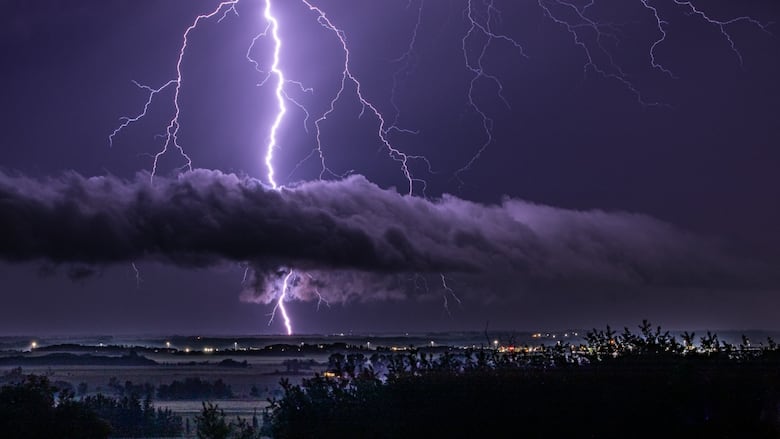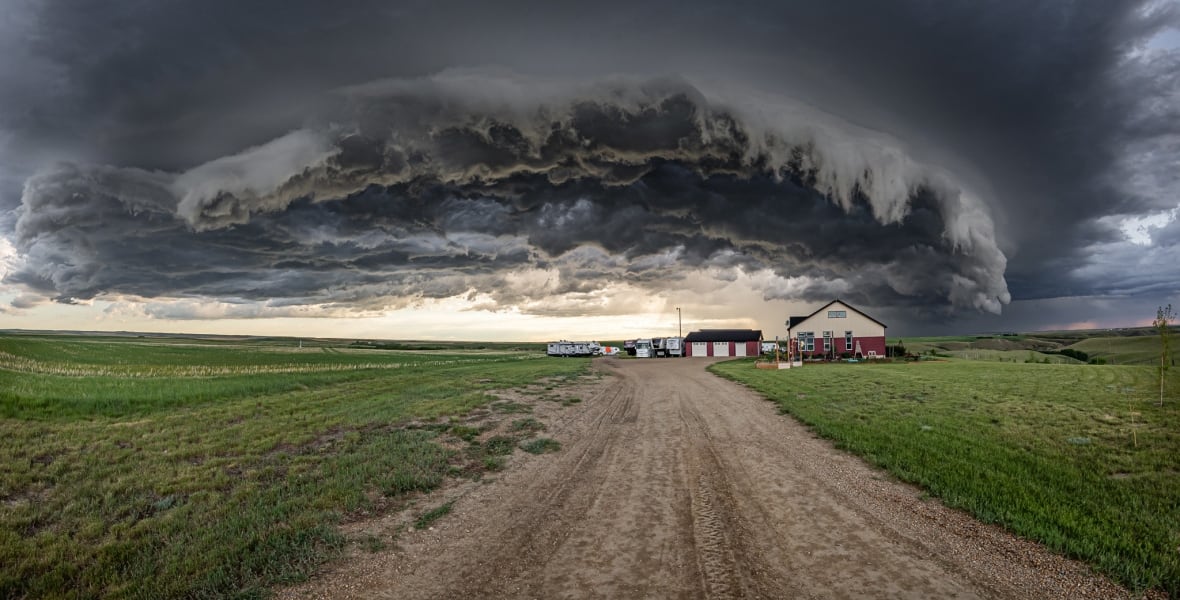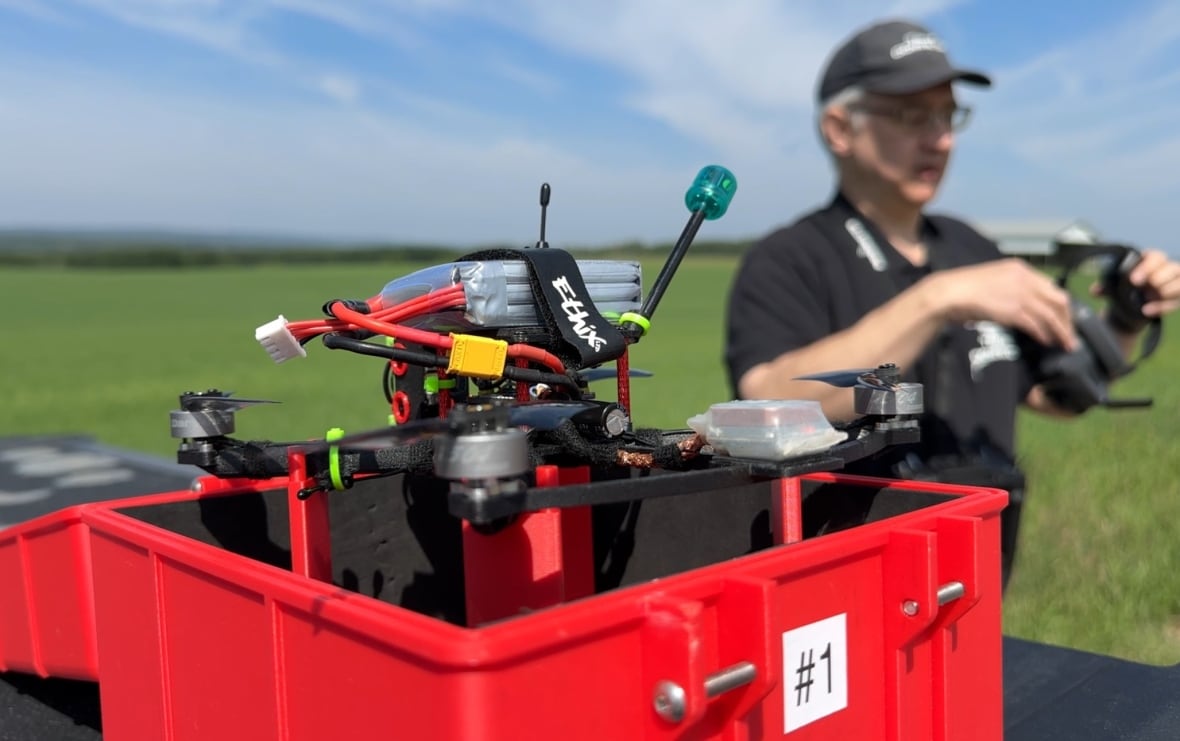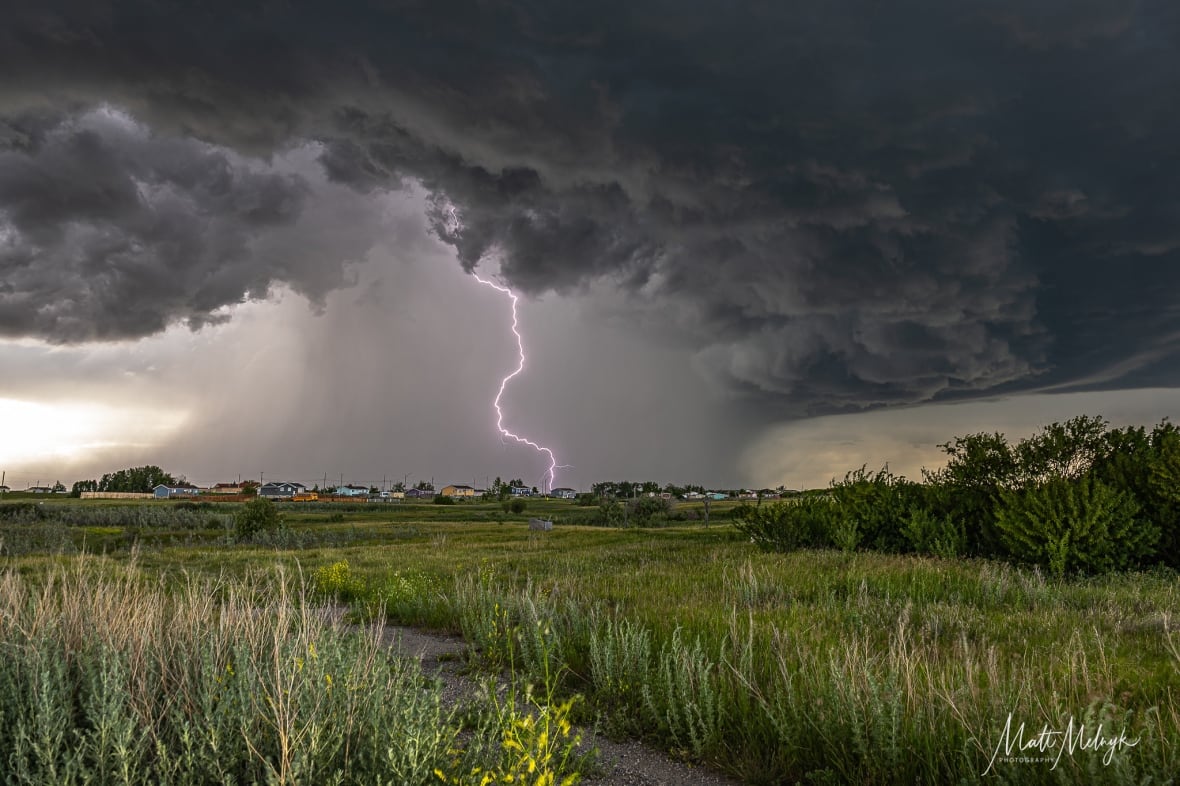Alberta storm chasers find beauty, science, community up in the clouds
When Matt Melnyk got his first lightning strike in a photo, he was hooked

You know when Environment Canada tells you a storm is coming and to stay away from it?
There's a group of people based in Alberta who find their happy place in the eye of a storm, not a safe distance from it.
Matt Melnyk comes by his love of clouds organically. As an airline pilot, he flies among them on a regular basis.
- How a meteorologist helped make Twisters' storm-chasing science as real as possible
- Women on the Prairies are chasing extreme storms. Here's why
"I've always been fascinated by clouds," Melnyk told CBC News in an interview.
"Why does that one look like cauliflower, why does this one look like silk? When you see them in a thunderstorm there are so many different parts. You have the wall cloud, the shelf cloud, the cumulonimbus cloud. There are so many different parts of it. No two storms are the same, which I find super amazing."

Melnyk has been storm chasing for more than 15 years.
"I am part of a group called Team Dominator Canada. It's the Canadian version of professional storm chasers in the States."
Mark Simpson is on the same team, but with another purpose.
"My focus is mainly collecting science data so we can improve response times for tornados," Simpson explained.
"Other members do photography, safety, and some others do some science as well."

Simpson, who isn't a pilot, stumbled into his passion almost 30 years ago in 1996.
"I supposed I got into it when I saw the first Twister movie," he said, with a laugh.
"I kind of always had a passion for it and the opportunity arose when I moved to Canada. I found out there are tornados nearby so I decided to learn how to chase. I got the opportunity to go down to the U.S. due to the need to get data. I used the skills I have in electronics so I could build a sensor that we could launch into a tornado."
During the summer, especially in July, Simpson stays busy.
It's roughly four days on, then three days to analyze the video and data.

"We are a little bit on the fringe from the research ourselves. We are not affiliated with the university. That allows us to do some things that others consider a little bit extreme," he said.
But working outside the world of academia has its advantages too.
"That said, the science stands on its own. You can either do it and reach that goal, or not. We do get more scrutiny but that's fine. Some of the work we do is fairly cutting edge, it's new, and stuff not being done in the universities."
The goal is to get the work published, but there is also a public safety piece.
"A lot of people monitor social media to see where bad weather is going to hit, so we try to give the location of the storm, the direction it is moving in, things like that."
Simpson said a good sized storm can attract around 30 to 40 chasers.

Meanwhile, for the pilot with a side hustle, it's about capturing a split second of magic.
"I like to go out there and put myself in a position where I can get a really cool photo and come home with a postcard," Melnyk said.
"When I got my first lightning photo, I was hooked right away."
With files from Dan McGarvey

